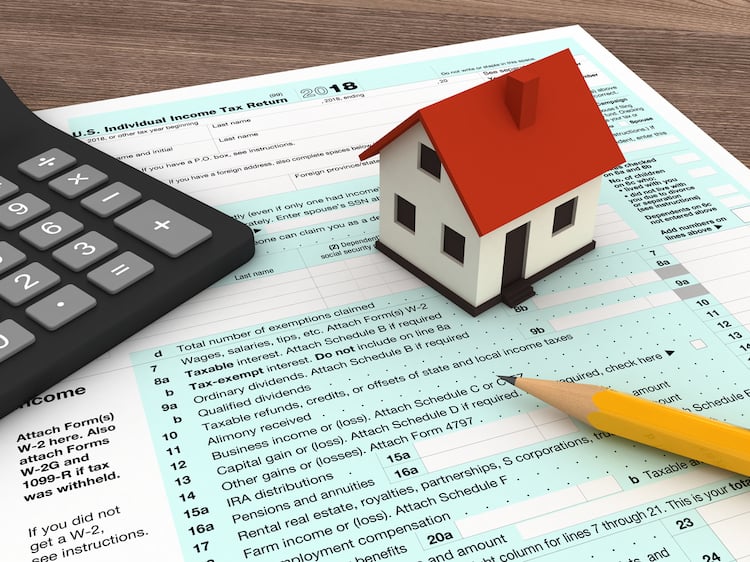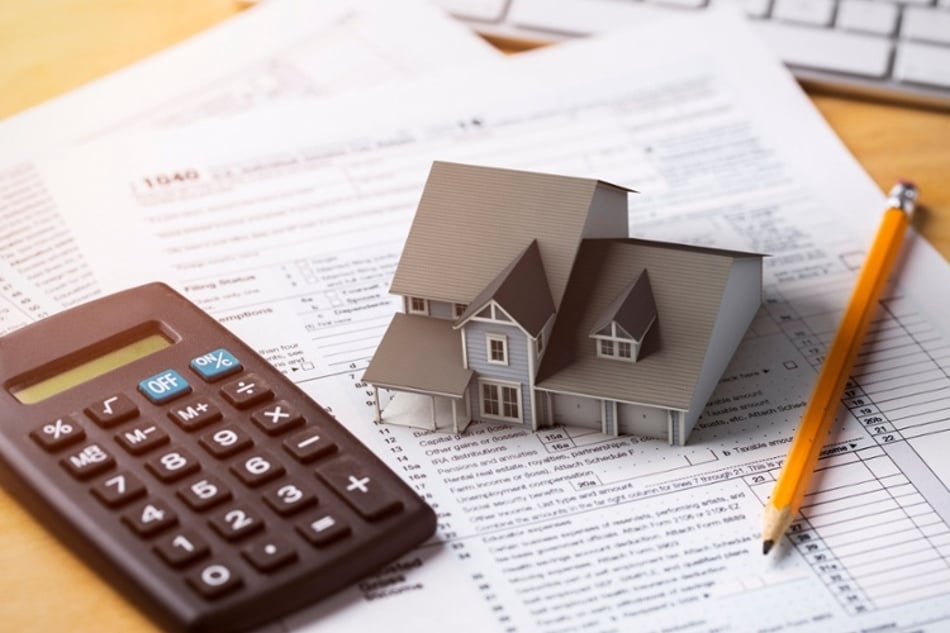Reporting the sale of a rental property works differently than when selling a primary residence, because the IRS considers a rental property to be a business property and not a home. While investors may wish to consult with a tax professional when reporting a sale, it can still be a good idea to understand how the process works.
In this article, we’ll take a look at the IRS forms used to report the sale of a rental property, along with the potential tax liabilities and how to avoid them. Let’s begin by discussing how the IRS knows a rental property was sold in the first place.
Key takeaways
- Form 1099-S is filed with the IRS by the party responsible for closing a real estate transaction.
- Three steps followed to report the sale of a rental property are calculating capital gain or loss, completing Form 4797, and filing Schedule D with Form 1040 at the end of the tax year.
- Selling a rental property may create tax liabilities for depreciation recapture and capital gains.
- Three ways some investors avoid paying tax when a rental property is sold is by willing the property to an heir, conducting a 1031 exchange, and offering seller financing.
How does the IRS know a rental property was sold?
Sometimes real estate investors are tempted to bypass reporting a rental property sale to the IRS. It could be because there is a large capital gain they want to avoid paying taxes on, or maybe no money was made on the sale of the property and an investor figures it’s not worth the time and trouble to do the paperwork.
The tax system in the U.S. is largely based on the honor system. However, the odds are the IRS will eventually discover that a rental property was sold, and the longer it takes for them to learn the truth about a sale the larger the potential penalties and interest could be for an investor.
IRS Form 1099-S
Form 1099-S is used to report the proceeds from real estate transactions and is sent to anyone who receives $600 or more in non-employment income. The form includes the name and address of the seller, closing date, gross proceeds, and address or legal description of the property sold.
Generally, the person responsible for closing the real estate transaction is required to file Form 1099-S. That could be a real estate attorney, disbursing title or escrow company, the mortgage lender, the seller’s real estate broker, the buyer’s real estate broker, or the buyer.
Copies of Form 1099-S are sent to the seller and also to the IRS. Although owners of a primary residence receive a capital gains exemption of up to $500,000 (when married filing a joint tax return), there are no exemptions on capital gains for the sale of a rental property.
Penalties for not reporting a rental property sale
Not reporting the sale of a rental property, either accidentally or on purpose, may put an investor on the radar screen of the IRS, especially when capital gains are involved.
The IRS may levy monetary penalties and fines against an investor for failing to report income and capital gains. They may also seek criminal penalties against an investor if the IRS is able to prove fraud or tax evasion.

How to report the sale of a rental property
Correctly reporting the sale of a rental property is the responsibility of every real estate investor. Even when an accountant, property manager, or real estate attorney is involved in the transaction, the buck stops with the investor.
1. Calculate the capital gain or loss
Determining the taxable gain (or loss) from a rental property sale is relatively easy, and is done by subtracting the basis from the sale price. Good rental property financial software like Stessa helps investors to automatically calculate the gain or loss when a rental property is sold.
2. File IRS Form 4797
A rental property is treated as a business property by the IRS. So, before reporting the gain or loss on Form 1040 an investor must complete and file Form 4797, Sales of Business Property.
Part I of Form 4797 is used to report the long-term gain (or loss) from the sale of a rental property held for more than one year, while Part II is used to report a short-term gain or loss if the property was held for one year or less.
Filling out Form 4797 for the first time can be complicated, so the IRS provides detailed instructions on how to complete and file Form 4797 when a rental property is sold.
3. Complete IRS Schedule D
The third step in reporting the sale of a rental property to the IRS is to complete IRS Schedule D (Form 1040 , Capital Gains and Losses, and attach it to Form 1040 or Form 1040-SR when filing the year-end tax return.
Transfer the information provided on Form 4797 to Schedule D, then enter the number from line 16 on Schedule D to line 7 of Form 1040.
Bonus: Consider using tax preparation software
While all of the forms used to report the sale of a rental property are relatively straightforward, it can still be easy to make a mistake even when the IRS instructions are painstakingly followed.
That’s why the Stessa Tax Center has partnered with TurboTax to extend an exclusive discount for members of the Stessa Community. After signing up for a free account with Stessa, head over to the tax center to claim the discount, along with other benefits including a suite of tax resources created in partnership with The Real Estate CPA.
Are proceeds from the sale of a rental property taxable?
There are two main taxes an investor may face when a rental property is sold:
1. Depreciation recapture tax
One of the biggest benefits of investing in real estate is the depreciation expense that is deducted from pre-tax income. During the time a rental property is held, the IRS allows investors to claim an annual depreciation expense to compensate for property wear and tear over time.
Residential property is depreciated over a period of 27.5 years (excluding the value of the land or lot). For example, if a single-family rental home was purchased for $150,000 and the lot is worth $15,000, the annual depreciation expense is $4,909:
- $150,000 purchase price - $15,000 lot value = $135,000 basis for depreciation
- $135,000 / 27.5 years = $4,909 annual depreciation expense
When a rental property is sold, investors are required to recapture the depreciation expense and report it as ordinary income.
The tax rate on depreciation recapture is based on an investor’s federal income tax rate, up to a maximum of 25%. If the rental property in this example was sold after five years, the amount of depreciation recaptured would be $24,545 and the maximum depreciation recapture tax would be $6,136:
- $4,909 annual depreciation expense x 5 years = $24,545 total depreciation recaptured
- $24,545 x 25% maximum tax rate = $6,136
Investors will also incur a tax on any capital gain made when a rental property is sold. The capital gains tax rate is 0%, 15%, or 20%, depending on an investor’s federal tax bracket.
To illustrate, let’s assume the single-family rental above was sold for $200,000.
The house was originally purchased for $150,000, so the capital gain subject to tax would be $50,000 (before subtracting any tax deductible selling expenses like closing costs and the sales commission).
If an investor is in the 20% tax bracket for capital gain, the capital gains tax liability would be $10,000:
- $200,000 property sales price - $150,000 property purchase price = $50,000 capital gain
- $50,000 x 20% = $10,000 capital gains tax liability

How investors avoid taxes when selling a rental property
While some investors may view paying the tax on the sale of a rental property as necessary, others look for ways to legally avoid capital gains and depreciation recapture taxes. After all, there may be better ways to put thousands of dollars to work instead of paying taxes.
Here are three options investors may wish to consider to avoid paying taxes when selling a rental property:
1. Pass the property to heirs
One way to avoid (and potentially eliminate) taxes on the sale of a rental property is to not sell the property, but instead hang on to it and eventually pass it along to heirs.
Holding onto a property can be a win-win for an investor and the heirs.
An investor receives income through death, and the cost basis of the property is stepped up to the current market value when the property is inherited. Stepping the property value up erases any potential capital gain tax and depreciation recapture tax liability for the heirs, so they are starting with a clean slate, so to speak.
2. Conduct a 1031 exchange
Section 1031 of the Internal Revenue Code allows real estate investors to defer paying tax on capital gains and depreciation recapture tax when one rental property is sold and replaced with another.
The general rules for a 1031 exchange are:
- Property being purchased must be of equal or greater value to the one being sold
- Property being purchased must be identified within 45 days
- Property being purchased must close escrow within 180 days
Real estate investors may conduct an unlimited number of tax deferred exchanges on an unlimited number of properties, provided they are used for business or investment purposes. When an investor decides to stop exchanging, any taxes owed will become due, unless the property is passed to heirs.
3. Offer seller financing
Seller financing is used by some real estate investors to spread out the payment of capital gains taxes over time.
For example, assume a $200,000 rental home is owned free and clear. An investor makes a deal with a buyer to accept a 20% down payment and carry the balance due over a 10-year term at a reasonable rate of interest.
If the seller originally paid $100,000 for the home, the maximum potential capital gains tax liability would be $20,000. However, by using a seller carryback, an investor may prorate the capital gains tax payment based on when purchase money is received from the buyer.
In this example, an investor would owe 20% of the capital gain taxes owed when the 20% down payment is received from the buyer. Then, the remaining capital gains tax would be paid over a period of 10 years, each time a payment is received from the buyer.









